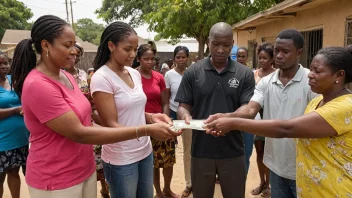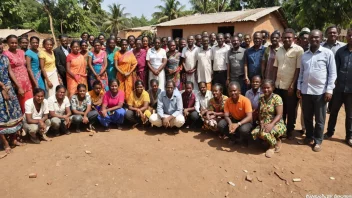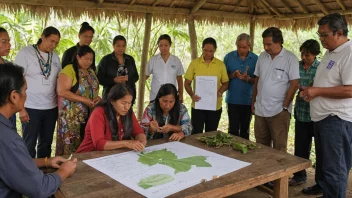Poverty remains one of the most pressing issues facing societies across the globe, affecting millions and manifesting in various forms—economic, social, and cultural. As we delve into the intricacies of this multifaceted problem, it becomes evident that public policy plays a crucial role in addressing poverty. Through effective legislation and strategic initiatives, governments can create an environment that promotes economic stability, social equity, and access to essential services. This article aims to explore how public policy can be harnessed to combat poverty, highlighting successful initiatives and providing insights on how individuals can contribute to these efforts.
Understanding Poverty and Its Dimensions
Poverty is not merely a lack of income; it encompasses a range of deprivations that hinder individuals from leading a dignified life. The World Bank defines poverty as living on less than $1.90 a day, but this statistic does not capture the broader aspects of poverty, which include limited access to education, healthcare, clean water, and adequate housing. Understanding these dimensions is essential for developing effective public policies aimed at alleviating poverty.
The Importance of Public Policy
Public policy serves as a framework through which governments address societal issues, including poverty. It involves the decisions and actions taken by public authorities to achieve specific goals. In the context of poverty alleviation, effective public policy can:
- Promote Economic Growth: By creating favorable conditions for businesses and entrepreneurs, public policy can stimulate job creation and economic development.
- Enhance Access to Education: Policies that ensure free or affordable education can empower individuals, enabling them to break the cycle of poverty.
- Ensure Healthcare Access: Public health policies that provide affordable healthcare services can help prevent medical bankruptcies and improve overall well-being.
- Support Social Safety Nets: Effective welfare programs can provide immediate assistance to those in need, helping to stabilize their economic situation.
Successful Public Policy Initiatives
Numerous countries have implemented successful public policy initiatives aimed at reducing poverty. Here are a few notable examples:
Brazil’s Bolsa Família Program
The Bolsa Família program in Brazil is a cash transfer initiative that provides financial assistance to low-income families. By linking financial aid to educational and health requirements, the program encourages families to invest in their children's future while ensuring basic needs are met. This initiative has significantly reduced poverty levels in Brazil and serves as a model for other nations.
Sweden’s Universal Welfare Model
Sweden’s comprehensive welfare system offers universal access to education, healthcare, and social services. By prioritizing social equity, Sweden has managed to maintain low poverty rates while promoting a high standard of living for its citizens. This model emphasizes the importance of public policy in creating an inclusive society.
South Africa’s Expanded Public Works Programme (EPWP)
The EPWP aims to provide temporary work for unemployed individuals while also delivering essential services to communities. This initiative not only offers immediate financial relief but also equips participants with skills that enhance their employability. It exemplifies how public policy can address both short-term and long-term poverty alleviation goals.
How Individuals Can Get Involved
While public policy is crucial, individuals also play a significant role in advocating for and supporting poverty alleviation initiatives. Here are some ways to get involved:
- Advocacy: Engage in advocacy efforts to influence public policy. Join local organizations that focus on poverty alleviation and participate in campaigns that promote equitable policies.
- Volunteering: Offer your time and skills to organizations that support low-income communities. Volunteering can provide direct support to those in need and raise awareness about poverty issues.
- Education: Educate yourself and others about poverty and its complexities. Understanding the root causes can empower you to engage in informed discussions and advocate for meaningful change.
- Community Engagement: Participate in local initiatives that aim to address poverty within your community. This could include food drives, literacy programs, or mentorship opportunities.
Challenges in Implementing Effective Public Policy
Despite the potential of public policy to address poverty, several challenges hinder effective implementation:
- Bureaucratic Inefficiency: Inefficiencies within government systems can delay the implementation of policies and reduce their effectiveness.
- Lack of Funding: Insufficient funding for social programs can limit their reach and impact, making it difficult to achieve desired outcomes.
- Political Will: Political divisions and lack of consensus can impede the development of cohesive poverty alleviation strategies.
- Data Gaps: Incomplete or inaccurate data can lead to misinformed policy decisions, hindering efforts to address poverty effectively.
Conclusion
Public policy is a powerful tool in the fight against poverty, capable of transforming lives and communities. By prioritizing economic growth, education, healthcare, and social support, governments can create a robust framework for poverty alleviation. However, the role of individuals cannot be overlooked. Collective efforts through advocacy, volunteering, and community engagement can amplify the impact of public policies and drive meaningful change. As we continue to confront the challenges of poverty, it is essential to recognize the interconnectedness of public policy and individual action in creating a more equitable world.






